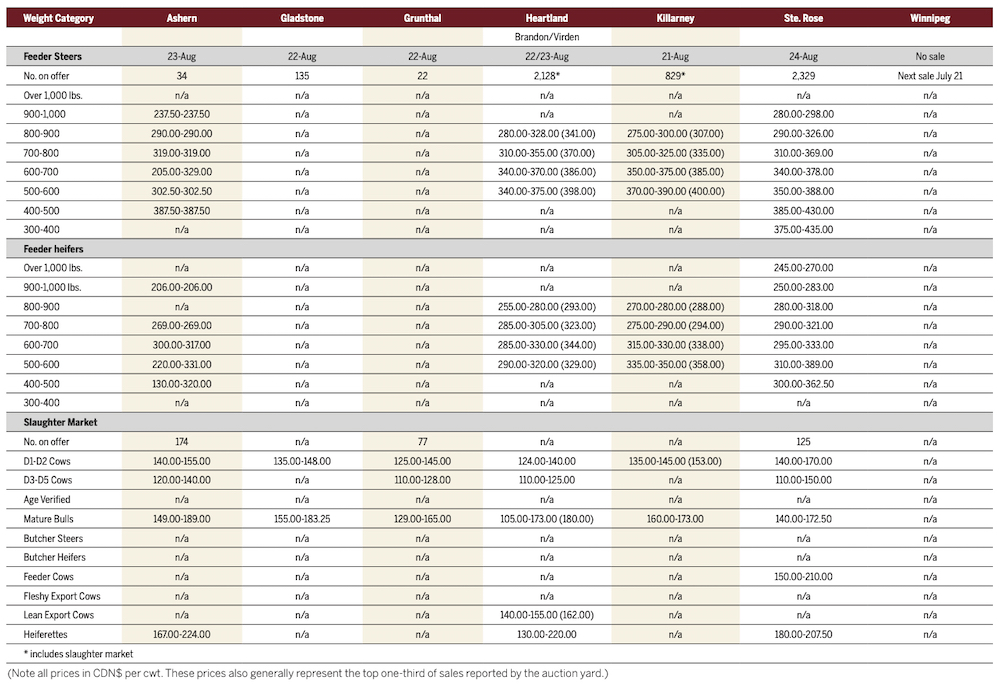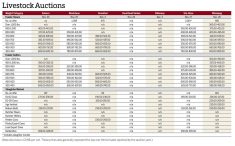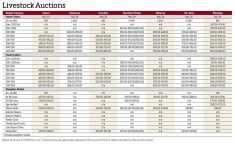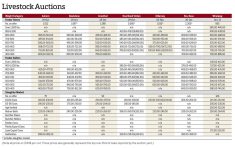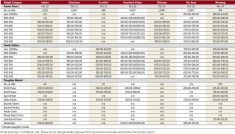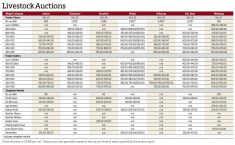All but one of Manitoba’s eight cattle auctions were open during the week of Aug. 18-24, with Winnipeg Livestock Sales set to go ahead on Aug. 25.
Gladstone Auction Mart and Ashern Auction Mart were back in business this week, with small numbers of cattle coming in, according to one of their auctioneers, Tyler Slawinski. Most of those cattle were for the slaughter market. Gladstone handled 135 cattle and Ashern had 208 pass through its rings.
“There were a handful of feeders at both sales, but really nothing a person could quote,” Slawinski said, adding the start of the annual fall run is weather-dependent.
Read Also
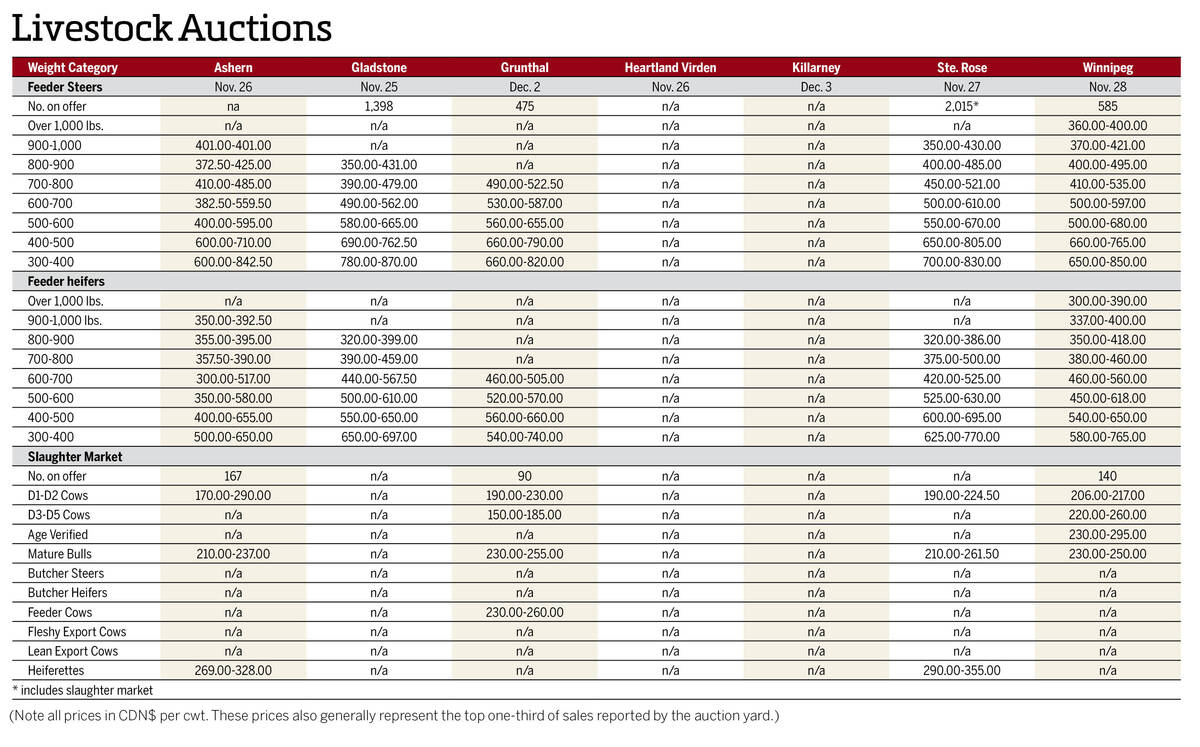
Manitoba cattle prices, Dec. 3
Cattle prices from Manitoba’s major livestock auction marts during the week Nov. 25-Dec. 2, 2025.
“If we see an early frost, then if things are dry leading to that frost, then things will be sooner than later. When we get to the end of September it will ramp up pretty quick.”
Some auctions had far more cattle, including Ste. Rose Auction Mart with 2,329 and Heartland Livestock Services’ Virden auction handling 2,055.
Although the large influx of cattle has yet to start at Gladstone or Ashern, Slawinski indicated more yearlings and slaughter cattle are likely to come in during the week of Aug. 25-31.
Pastures across Manitoba are spotty from location to location, Slawinski said.
“Some were blessed with timely rains and others were not. That’s the way the rains have been trending the last couple of years. You might be a mile away from the rain or you might be in it.
“We haven’t seen a real general provincial rain in quite some time. We did have a fairly decent one in May, but after that it was quite spotty.”
Statistics Canada issued its semi-annual report on domestic cattle inventory Aug. 23. Countrywide there were 12.16 million dairy and beef cattle on all operations as of July 31. That continued the downward trend seen in Canada’s cattle industry, and it’s the least number of cattle in the country for July 1 since 12.15 million in 1988.
As for Manitoba, total cattle slipped to one million, which marked the sixth straight year that number has declined. That’s a far cry from the province’s all-time high of 1.735 million head for July 1 in 2005. The population has been in steady decline except for a few bumps upward along the way.
The current number is the second fewest in the province, easing under 1.006 million in 1969. Manitoba hasn’t had less than one million cattle midway through a year since there were 982,000 in 1962, according to StatCan.
The reduced number has driven slaughter and feeder prices to record levels in several cases, but to Slawinski, the steady decline doesn’t bode well for the cattle industry on the Prairies.
“There’s going to be a pile more producers hanging their hats up now that the prices are really good. Some guys are sitting on the fence, toying with the idea for quite a while, and with the promising prices, I think you’re going to see a lot of them cash in their chips,” he said.
Added to that, high interest rates and inflation have made it more difficult for anyone wanting to enter the cattle industry, he said.
Slawinski called on financial institutions to step in to help such producers.

